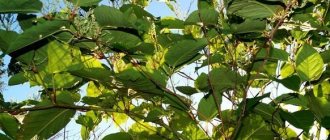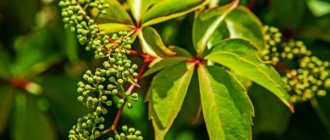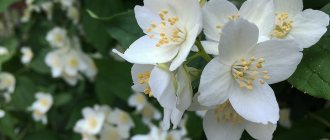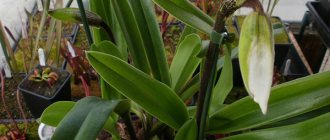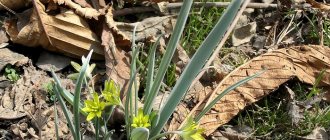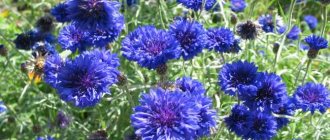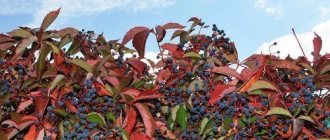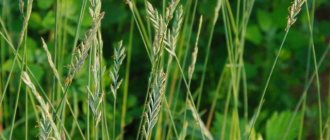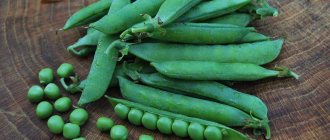Highlanders amaze with their diversity of species. They can be ground cover plants or vines, tall grasses or aquatic plants. Decorative specimens of the knotweed will decorate the garden. The knotweed flower looks good in a flower bed or in single plantings.
The healing properties of knotweed are also important. Many gardeners grow this useful plant precisely for the purpose of obtaining medicinal raw materials.
Highlander is unpretentious to growing conditions and can even act as an aggressor plant. Therefore, strictly monitor its growth and limit its spread.
Origin
Scientists classify the plant Highlander (Polygonum) as a member of the Buckwheat family. The flower is popularly called buckwheat and buckwheat, and translated from Latin the name means “having many knees,” which indicates the structure of the knotty stem of the knotweed.
Knotweed is widespread in the temperate zone of Eurasia and North America.
Homeland of the plant
The genus Highlander is represented by many species of plants, noticeably different from each other: low-growing herbaceous bushes, vines, subshrubs reaching a height of more than 200 cm, annual and perennial plants. In total, there are more than 250 plant species in the genus, of which two dozen have been cultivated.
Representatives of the genus are used not only as an attractive and unpretentious ornamental plant, but also as a medicinal plant (Knotweed).
Beneficial features
ethnoscience
Knotweed can help with diarrhea, sore throat and mouth inflammation. Polygonum root is used for bleeding, cholelithiasis and urolithiasis. You can relieve inflammation caused by cystitis. In eastern countries it is even used for douching and the treatment of tumors. Has a sedative effect.
Cosmetology
Products containing knotweed will help normalize the water balance of the skin and get rid of burns and dermatitis. A decoction of the roots will eliminate sweating feet and corns.
Dietary supplements
Young leaves and stems of snakeweed are edible. Powder from dried roots is added to bread and alcoholic beverages.
Description
A common unifying feature for all types of knotweed is the structure of the stem, which has numerous bends and nodes. The stems of knotweed can be erect, creeping or climbing. The stems are densely covered with simple-shaped leaves on elongated petioles.
The roots of most plant species are well developed and creeping. There are species with a tap root system.
Polygonum flowers are miniature (white, pink or red), growing at the top of the stem, collected in racemes, paniculate or spike-shaped inflorescences. The knotweed bushes are abundantly covered with flowers, from May until the coldest weather. The seeds of the plant are enclosed in fruits - small dark nuts.
Kinds
- Related Highlander - a widespread garden flower. Forms dense curtains, no more than 30 cm high. The foliage is bright green, collected in rosettes, lanceolate in shape. Pink flowers are in spike-shaped inflorescences, 8 cm long; after blooming, they darken, becoming crimson. Varieties: Darling Red (deep pink-crimson flowers) and Donald Londes (pink-red inflorescences).
Related
- The amphibious knotweed is used to decorate the banks of natural and artificial reservoirs. The aquatic form of knotweed takes root at a depth of 10–14 cm; stems and narrow leaves float on the water surface. Light pink spikelets, consisting of small flowers, stick out 5 cm from the water, like small bright candles.
- Alpine mountain grows up to a meter in height, forming a lush bush with elongated (up to 12 cm) emerald foliage. Paniculate inflorescences of white or yellow hue. Alpine
- Bluebell knotweed grows up to 90 cm, forming dense and dense thickets. It is distinguished by abundant and attractive blooming of pink flowers that look like bells.
- Capitate knotweed is a dwarf plant, up to 12 cm high. The clumps reach 30 cm in diameter. Pink flowers are collected in inflorescences - balls.
Capitate
- Candle-shaped . The plant, native to the foothills of the Himalayas, forms meter-long lush bushes. The foliage is elongated, bright green in summer, turning golden in autumn. Inflorescences in the form of a spike, rich scarlet color, appear in July and remain decorative until September. Varieties: Album (white flowers), Roseum (pink), High soseti (raspberry), Inverleith (miniature knotweed with red flowers).
- Twice twisted. An unpretentious and quickly growing plant, reaching a height of half a meter. Pointed narrow leaves are concentrated in basal rosettes, the stems are bare. Cream or pinkish flowers are collected in small spikelets. Double twisted knotweed is an excellent honey plant and medicinal plant.
Twice twisted
- Variable knotweed is an Asian variety that is very popular among gardeners. The abundantly flowering bush grows up to 200 cm in height and up to 150 cm in diameter. The stems of the flower are erect, densely leafy, crowned with paniculate large white inflorescences. Variable knotweed blooms for more than 50 days in July–August, spreading a strong honey aroma.
- Bird's knotweed (knotweed) is a medicinal annual plant, widely distributed in fields and meadows of the temperate zone of the Northern Hemisphere.
It is considered a weedy unpretentious plant. Knotweed is valuable as a feed (its nutritional value is equal to that of legumes); a decoction of the herb is used to rinse hair to improve growth and is used as a fabric dye. In medicine, it is widely used for hypertension, tuberculosis, inflammation of the kidneys, stomach and intestines, and liver diseases.
You can get acquainted with the appearance of the plant from the presented photos of the knotweed.
Disadvantages of the Highlander
Gardeners very often criticize the plant for being too aggressive, which manifests itself in the fact that the mountaineer “wants to live” very much, so it spreads across almost the entire suburban area. Sometimes it becomes impossible to control its growth: even if the planting of the Aubert knotweed is kept to a minimum, this does not change the situation.
In just one season, this plant can throw out new shoots several meters beyond the boundaries of 1 bush. This brings a lot of inconvenience, since in this case gardeners have to constantly weed out shoots that spread throughout the entire area. That is why the plant is not recommended to be planted in a small garden. The Highlander loves large spaces so that he has room to roam!
Growing in the garden
For the plant, choose a sunny area with loose and fertile soil. In dense shade, the foliage of the knotweed loses its decorative effect. Fertile loams that retain moisture well are suitable for the plant. It is necessary to add humus to sandy soils to increase the fertility and moisture capacity of the soil.
Important ! The knotweed plant tends to grow and quickly spread throughout the area, suppressing neighboring plants. To prevent this from happening, the planting site for the knotweed is limited to buried sheets of tin or a special plastic border.
Plantings of knotweed require regular moistening; flowering knotweed especially needs moisture. Mulching the soil around the bushes with peat, wood shavings, and straw can reduce the need for water.
During the period of active growth and flowering (from April to September), it is useful to apply fertilizer to the plants, alternating nitrogen and mineral mixtures. It is enough to fertilize the knotweed once a month.
Knotweed responds positively to pruning. Lush bushes are sometimes thinned out to improve lighting within the crown. Ground cover species are formed into neat clumps, removing excess branches. In autumn, it is recommended to prune perennial species, leaving stems about 10 cm high.
knotweed
For the winter, the plant does not need shelter; only young plantings are covered with spruce branches and sawdust. If the aboveground part of the knotweed freezes, then new growth quickly grows from the roots.
Highlander is considered an unpretentious plant; it is practically not susceptible to diseases and pest invasions. However, it is worth regularly inspecting the plantings. With excess moisture, knotweed may suffer from rot.
Propagating the knotweed plant is not difficult. In spring and autumn (no later than a month before the onset of persistent cold weather), the plant is propagated by dividing the bush. The knotweed is dug up and the bush is divided into parts, preserving a well-developed bunch of roots and stem buds on each division. Parts of the plant are immediately transferred to new areas and planted in the ground. For better rooting of the plant, it is necessary to keep the soil moist.
Before planting, knotweed seeds are stratified for about 3 weeks in damp sand at a temperature of +5 degrees. The plant is sown as seedlings in February or immediately in open ground in April, as soon as the ground warms up to +10 degrees. Seedling care is standard: regular watering, loosening, picking.
Care
Shrubs do not require special care, since they are unpretentious and grow on any soil. But it is preferable to plant in well-lit areas. They love organic feeding. The peak of decorativeness falls from June to November, blooming until frost. The plant loves moisture and needs to be watered daily. It is better to place the seedlings near the drainage pits, since they will be comfortable, the roots will be saturated with moisture, and decorate the pit itself.
Video about the knotweed plant:
Reproduction
Replant by dividing the roots, carefully pulling out the bush with a lump of earth. Small roots remain in the ground and sprout again. Having provided proper care for the plant, the knotweed feels great in one place for more than 10 years.
In the autumn, you should not forget about pruning the above-ground part. With the arrival of spring, young shoots develop quickly. An excellent option for the banks of reservoirs or mountain slopes.
Plants are not afraid of frost and tolerate temperature drops down to -30 degrees. In some cases, if the roots are damaged by low temperature, the plants do not freeze out, but will bloom with small flowers. After a short time, the bush will rejuvenate and will delight you with lush greenery. If desired, you can choose a variety in accordance with the size and color scheme.
Breeding rules
Application
In ornamental gardening, the unpretentious and fast-growing knotweed is widely used in mixborders, rock gardens, for decorating buildings and fences, and strengthening the coastal zone of ponds.
Large specimens of the plant form powerful, profusely flowering bushes that look impressive on the lawn. Climbing forms of knotweed are planted near arbors and arches; long stems twine around supports, creating green walls. Low-growing forms look great under trees and shrubs, as part of an alpine slide composition.
Where and how to use
The unpretentious highlander is successfully used to decorate the banks of reservoirs and is an integral part of shady flower beds. Tall bush forms look good in single plantings on the lawn. Combines harmoniously with astilbe, hosta, conifers, cereals, and phlox.
It has also been used in folk medicine due to its antiseptic, hemostatic and antioxidant properties. The most useful: alpine knotweed and snakeweed. Valuable plant raw materials are harvested in May, at this time the concentration of nutrients is highest.
You can eat the knotweed. Boiled rhizomes are used in salads, leaves are used as part of vitamin dressings in green cabbage soup. Aromatic hot seasonings are prepared from the seeds. Leaf tea is a wonderful drink with a unique taste.
